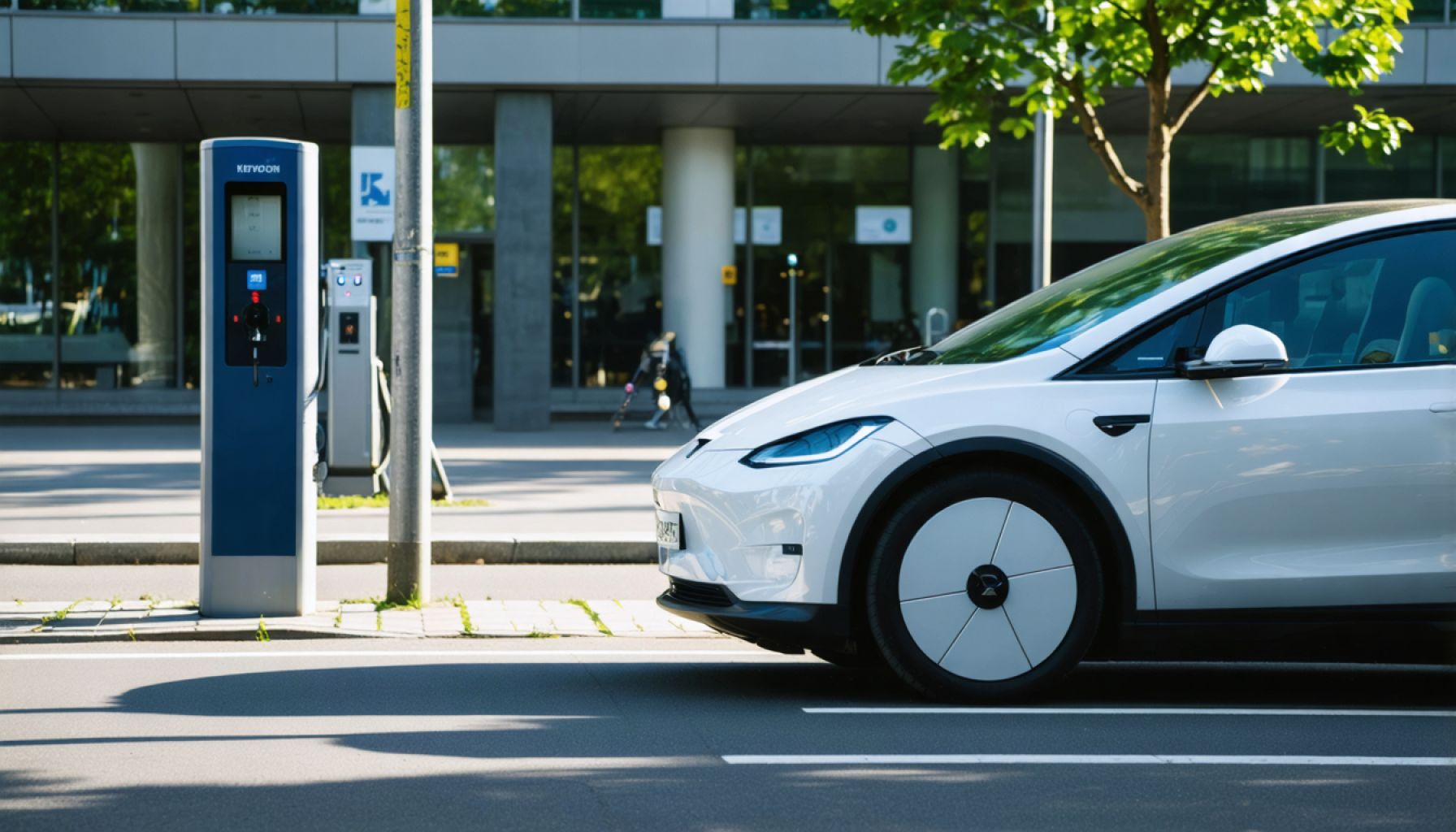- Electric mobility is reshaping urban landscapes, transforming daily life in cities worldwide with electric buses, e-scooters, and zero-emission cars.
- Electric buses are reducing urban pollution and noise, with over 600,000 in global fleets, primarily propelled by China’s ambitious deployment.
- E-scooters and e-bikes offer sustainable, flexible solutions for last-mile connectivity, promoting a shift from petrol-based transport for short trips.
- Electric cars are boosting the need for charging infrastructure, with home and fast-charging stations becoming more common, fostering emission-free travel.
- Wireless charging technology is advancing, aiming to integrate charging seamlessly into urban life by eliminating the need for cords.
- The overall shift to electric mobility is not just about reducing emissions but enhancing urban livability by creating cleaner, quieter environments.
Electric mobility is not merely a trend; it is a revolution reshaping the very fabric of our cities. Picture a bustling metropolis: the rhythm of footsteps mixing with gentle whirs of electric buses, e-scooters gliding soundlessly along cycle paths, and zero-emission cars quietly maneuvering through traffic-laden streets. These are not scenes from a distant future. They are today’s reality, and they are transforming how urban dwellers experience daily life.
The Charge Forward: Buses Leading the Way
Eager to tackle urban pollution and reduce greenhouse gas emissions, cities across the globe are embracing electric buses. These vehicles, charged overnight at depots, offer a silent and smooth ride, delighting passengers and reducing noise pollution. In 2021, the number of electric buses in global fleets crossed the symbolic threshold of 600,000, with China leading this charge.
Cityscape in Flux: E-Scooters and Bicycles
Swarm into any major city and one cannot miss the sleek e-scooters zipping through narrow streets and parks. These micro-mobility options empower commuters to bypass traffic snarls, making last-mile connectivity a breeze. As a sustainable and flexible option, e-scooters and e-bikes are catalyzing a shift from traditional petrol-based short trips, offering a highly efficient and eco-friendly alternative.
The E-Car Rise: Fueling Urban Potential
Electric cars are redefining personal transportation, offering a guilt-free drive with each mile. With major automakers pledging to go all-electric by the coming decades, urban landscapes are preparing for a surge in demand for charging infrastructure. Home charging stations are becoming standard fixtures in new apartments, and fast-charging stations are popping up in strategic urban locations, enabling long-distance travel without the fossil fuel guilt.
Cutting the Cords: The Wireless Arena
Imagine the convenience of charging your electric vehicle without cords. Advancements in wireless charging technology are turning this vision into a reality, with pilot projects underway in several forward-thinking cities. These innovative solutions hint at a future where parking becomes synonymous with charging, erasing the lines between power access and everyday mobility.
The Takeaway: A Cleaner, Quieter Future
Electric mobility promises not just a reduction in emissions but a holistic transformation of our cities into cleaner, quieter, and more livable environments. As cities continue to evolve their urban mobility strategies with electric options at the forefront, the shift toward an electrified reality gains momentum and credibility.
Discover the possibilities as the pulse of your city becomes electric. Navigate the noisy past toward a harmonious future, and witness the change around you.
Revolution Even Quieter Than Imaginable: Electric Mobility’s Next Chapter
Expanding on the Electric Mobility Revolution
Electric mobility extends beyond the visible changes in transport modes to impactful shifts in infrastructure, economic models, and societal behavior. Here, we delve deeper into the facets of this revolution, providing insights and practical recommendations.
Market Forecasts & Industry Trends
The global electric vehicle (EV) market is projected to grow at a compound annual growth rate (CAGR) of 21.7% from 2021 to 2030. According to BloombergNEF, electric cars will make up 58% of global passenger vehicle sales by 2040. The significant investment by automakers like Tesla, Volkswagen, and Ford into battery and EV technology is accelerating this transition.
The Role of Government Policies
The rapid adoption of electric mobility is heavily influenced by proactive government policies. Subsidies, tax incentives, and stricter emissions regulations are creating favorable conditions for electric vehicles. For example, Norway has seen a dramatic rise in EV ownership, primarily due to comprehensive government incentives. The European Union has also set ambitious CO2 emissions reduction targets, pushing car manufacturers to accelerate innovation.
Innovations in Battery Technology
Battery technology remains a pivotal aspect of the electric mobility ecosystem. We are witnessing an evolution toward solid-state batteries, which promise higher capacity, faster charging times, and improved safety over traditional lithium-ion batteries. Companies like QuantumScape are pioneering these advances, potentially shifting future EV infrastructure needs and cost paradigms.
Real-World Use Cases
Electric buses in Shenzhen, China, exemplify how a large-scale transition to electric mobility can be successfully implemented. With over 16,000 electric buses, Shenzhen has reduced emissions and decreased city noise levels significantly. On the individual level, the Tesla Model 3 showcases how electrifying personal transport can be combined with cutting-edge technology, offering a seamless and sustainable user experience.
Addressing Common Concerns
1. Charging Infrastructure Limitations
Although electric cars promise zero emissions, some consumers worry about the availability of charging stations. Urban areas are rapidly expanding their charging networks, with wireless charging and solar-powered stations on the horizon to alleviate concerns over accessibility.
2. Range Anxiety
Improvements in battery technology are gradually increasing the range of electric vehicles. The latest models offer ranges exceeding 300 miles on a single charge, addressing the primary hurdle of long-distance travel.
Actionable Recommendations for Urban Dwellers
1. Explore Incentives: Investigate local and national incentives for electric vehicles; these can significantly reduce the initial purchase price.
2. Install Home Charging: If feasible, install a home charging station to make charging your electric vehicle convenient and cost-effective.
3. Leverage Public Transit: Utilize electric public transport options, like buses and e-scooters, for short trips to contribute to sustainable urban commuting habits.
4. Stay Informed: Keep up with technological advancements and policy changes in electric mobility to make informed decisions about transportation.
Relevant Links
For more information on electric vehicles and sustainable practices, check out TESLA and Bloomberg.
Conclusion: Embrace the Electric Transition
By understanding these trends and innovations and addressing common concerns, you can embrace this smoother, cleaner future and potentially influence urban mobility’s development. The electric mobility revolution is here—ride the wave and witness the transformation firsthand.















